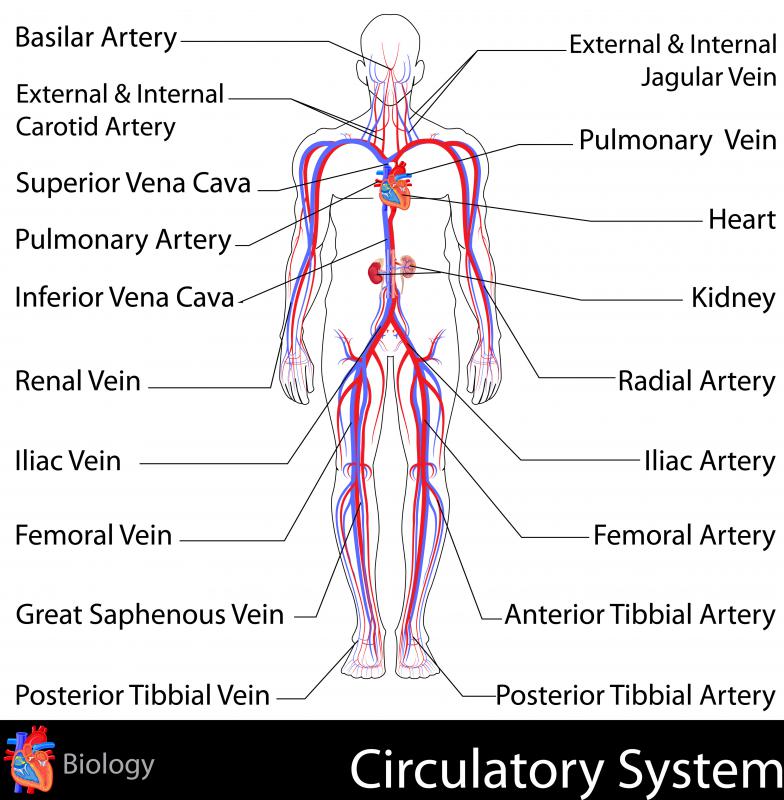At WiseGEEK, we're committed to delivering accurate, trustworthy information. Our expert-authored content is rigorously fact-checked and sourced from credible authorities. Discover how we uphold the highest standards in providing you with reliable knowledge.
What is the Glenn Shunt?
The Glenn shunt is one surgery that may be performed on children with congenital heart defects who have a single ventricle profile. Usually this means that the right ventricle or left ventricle is much smaller than normal or impaired in other ways and is unable to adequately pump blood to the body or lungs. Typically the Glenn is considered palliation because it doesn’t fix the small ventricle problem, though it may address it for a few years. Additionally, the surgery is often part of the staging that leads to a more successful palliative surgery called the Fontan.
Part of the goal with the Glenn shunt is to bypass cardiac circulation and allow some blood to get to the lungs for oxygenation, without overworking a weakened or tiny ventricle. This is achieved by taking the super vena cava, which is returning blood to the heart for transit to the lungs, and hooking it directly to the right pulmonary artery. Such a move creates passive bloodflow to the lungs, completely bypassing the heart.

Initially, this surgery was part of the Fontan procedure, which would also hook the inferior vena cava to the superior vena cava, via a tunnel in the heart, so that all blood flow to the lungs became passive flow. The trouble with doing the surgery all at once was that it tended to have a high incidence of creating unacceptable pulmonary pressure levels. Ultimately, surgeons determined that greater success would be possible if the procedures were staged instead, and it could then be determined whether pulmonary pressure after a Glenn shunt was satisfactory to perform the second stage. It isn’t always, and some children only have the Glenn or hemi-Fontan, as it has also been called.

Another advantage of the Glenn shunt is that children can have this surgery earlier, and this can help increase oxygen saturation levels sooner. It’s not uncommon for children to have this surgery in the first three to six months of life, and it significantly improves outcome for most. It is a more preferable method for continuing to support life than early shunt procedures like the Blalock-Taussig (BT) Shunt or the Norwood, that children might receive in the first few days of life if they have single ventricle. Many kids with single ventricle will receive a BT or Norwood, Glenn and ultimately a Fontan completion.

As mentioned, the Glenn shunt is palliation and does not fix the problem. In fact, most kids with single ventricle profile can’t be fixed. Since repair is not possible, rerouting circulation to establish reasonable oxygen levels is often considered the best solution.
Children with just a Glenn or the full Fontan often end up requiring a heart transplant eventually. Yet, significant improvements in repair and technique continue to extend life prior to this being necessary. Where once these children were routinely given bleak survival rate statistics, there are now many people living well into adulthood with Glenn and Fontan repairs, and this is extremely hopeful.

It would be unfair to draw a fully rosy picture of the Glenn shunt. Some children develop extremely high pulmonary pressure after having one of these procedures and might need it taken down. Complications after surgery can include pericardial or pleural effusions, infection, high pulmonary pressure and others.
Death does occur in some surgeries, though mortality rates of the Glenn shunt tend to be low. Children with a Glenn tend to “sat” or have oxygen saturations in the low 80s or lower, and this may translate to much lower energy than the average child, though not always. Should the Fontan be possible, which might be performed when kids are two years of age or older, the increased oxygen saturations afterwards (high 80s-90s) often create dynamic change in behavior and increased energy levels.
AS FEATURED ON:
AS FEATURED ON:
















Discuss this Article
Post your comments